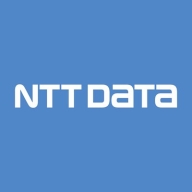

NTT Cloud and Google Compute Engine compete in the cloud services market. Google Compute Engine seems to have the upper hand due to its feature richness and perceived value, whereas NTT Cloud is strong in pricing and support.
Features: NTT Cloud provides reliability, compliance with industry regulations, and robust security. Google Compute Engine offers scalability, extensive global infrastructure, and superior integration with Google services. NTT Cloud focuses on security and compliance, while Google Compute Engine delivers a wider array of services for enterprise needs.
Ease of Deployment and Customer Service: Google Compute Engine offers a flexible deployment model with comprehensive documentation and extensive community support. NTT Cloud has a straightforward deployment process with enterprise-level support and dedicated account managers. Google Compute Engine's large support ecosystem contrasts with NTT Cloud's personalized service, presenting different customer service levels.
Pricing and ROI: NTT Cloud generally has a lower setup cost, offering good initial ROI, especially for businesses prioritizing compliance and security. Google Compute Engine, with potentially higher initial costs, provides long-term value through its pay-as-you-go model and efficiency in large-scale operations. Flexible pricing in Google Compute Engine can yield better ROI for companies requiring advanced operational capabilities and global reach.


Google Compute Engine delivers virtual machines running in Google's innovative data centers and worldwide fiber network. Compute Engine's tooling and workflow support enable scaling from single instances to global, load-balanced cloud computing.
Compute Engine's VMs boot quickly, come with persistent disk storage, and deliver consistent performance. Our virtual servers are available in many configurations including predefined sizes or the option to create Custom Machine Types optimized for your specific needs. Flexible pricing and automatic sustained use discounts make Compute Engine the leader in price/performance.
We monitor all Infrastructure as a Service Clouds (IaaS) reviews to prevent fraudulent reviews and keep review quality high. We do not post reviews by company employees or direct competitors. We validate each review for authenticity via cross-reference with LinkedIn, and personal follow-up with the reviewer when necessary.